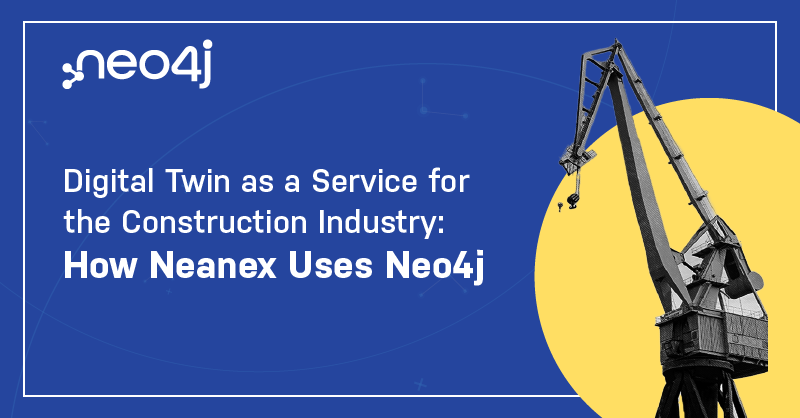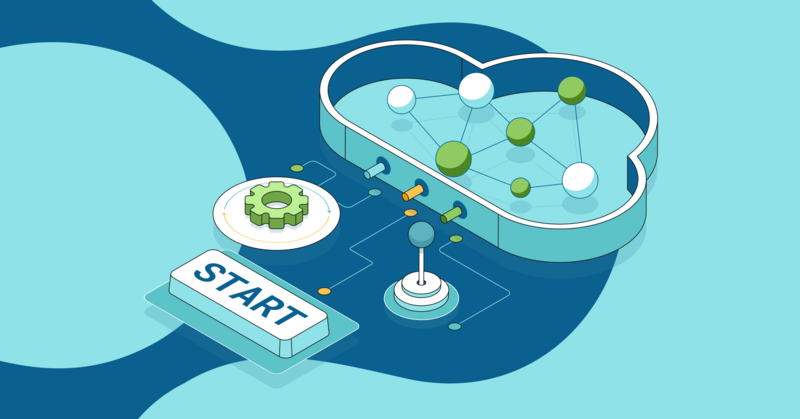Digital Twin for the Construction Industry: How Neanex Uses Neo4j

Field Marketing Director
5 min read


Many hands make light work. But they leave behind many piles of messy data. It gets worse when this data is siloed, never to be seen by many who should.
This is what happens when building big, critical assets in the built environment – including high rise buildings, airports, power stations, water utilities, and the like. Huge teams of people, all with an area of focus and their own systems and tools to support their work, each have a job to do.
But what’s the big picture? How do the asset stakeholders get a better understanding of what’s going on, and how things are connected?
When complexity gets siloed away, the complete picture gets obscured. Data that seems clean may actually be messy from a different point of view. Belgian firm Neanex aims to create a single source of truth for big asset projects by creating digital twins of massive physical objects. Neo4j is at the core of their work.
Neanex recognized the construction industry faces a data problem that’s unique due to the size and impact of projects that have so many stakeholders. The acronym used in the building field, AECO, highlights the diversity of these stakeholders: architecture, engineering, construction, and operations.
Each stakeholder has its own data, its own applications, and its own process for record keeping and project management. The result is information silos created while the work is underway, leading to gaps in knowledge and no bridge to connect everything together.
“We saw this enormous siloed complexity of these large projects and started developing connections between the silos,” said Josefien Vanhuyse, CEO at Neanex. “And very soon we saw that just connecting them was not enough. What was missing was a single source of information that runs like a thread throughout the complete asset lifecycle.”
Want to Build a Digital Twin? Start With Neo4j
Neanex understands big infrastructure, utilities, and building projects – and the big data that comes along with them. It leverages its understanding of the project landscape to create virtual representations of real-world physical objects or processes: digital twins.
To get there Neanex recognized it needed to use technology capable of handling huge amounts of disparate data and managing all the relationships and connections across all of that data.
After evaluating their options Neanex chose to build its digital twin solution with Neo4j because it’s highly scalable and flexible to handle vast amounts of data in all kinds of shapes, including the huge amount of relations that come with that.
“We’re handling a huge amount of data, managing all those relationships and connections, with huge data models,” Vanhuyse said. “You need a strong database behind the technology. So I think it was quite a leap to move to graph technology, but today we have a unique position in the market because of the choice that we made in selecting Neo4j.”
Digitalization of Data for Massive Construction Projects
After getting started with Neo4j in 2018, Vanhuyse said investment in the graph database has paid off.
“Our customers and projects today, they need to scale,” she said. “And that means that our clients really see the added value of the application and the technology behind it, of course.
“They make the choice to work with Neanex because they see the challenge of the scale of the data they’re working with. And it’s getting bigger every day, of course, with the digitalization throughout the complete asset life cycle, because data is coming from everywhere. So how will they manage that? This is a really big driver for us and, of course, for our customers.”
Escaping the Excel Hellscape With Digital Twin
The data comes in all shapes and sizes. From the seemingly endless Excel spreadsheets and CSV files – and paper project documents that have been (or need to be) digitized – to modern AI and machine learning tools that churn out massive amounts of data, Neanex operates in a diverse and unique ecosystem of data sources.
The goal is not just to connect an array of data tools used by teams over the course of the project, but to connect people to each other with this data so that the people in charge of each phase of the critical asset project, from design to building to maintenance, can make smart, sustainable decisions.
Vanhuyse compares it to the classic children’s toy where blocks shaped like circles and triangles and stars must fit into holes that match their shape.
“And that’s actually what we can do very well with Neanex Portal is make sure that all those different forms can actually end up in a standardized information model with an intuitive user interface. So you can actually dive into the data, even if you’re not a data expert,” she said.
20 Minutes, or Two? Getting 10X Faster
Vanhuyse relays an anecdote of a client with numerous systems running and how laborious it was just for analysts to simply copy and paste data from one system into another. This client had the process documented to take about 10 minutes for one single asset. With Neanex, the process now happens 10x faster.
Speed comes with being able to make sense of data in its native state, whether it’s high tech or low tech. “It’s not like a one-lane street, it’s like a highway with a lot of possibilities going fast and quick, Vanhuyse said. “So that means that we can address a lot of organizations that are on different maturity levels.”
Innovating to Solve Big Problems
By solving one of today’s biggest business problems within a scalable framework, Neanex has gained recognition by the European Commission as a Key Innovator.
The future looks bright for Neanex, and it seems the organization has a massive head start as the pioneer in its space as one of, if not the only, web-based digital asset register in the market.
“In the future, we will implement this kind of tooling for the data engineer specialists of the asset owners themselves so they can offer their own flexibility, and will be able to interconnect our service more into their IT landscape,” Vanhuyse said. “So that’s actually the way that we want to tackle how we can keep on moving as fast as the rest of the industry.”








